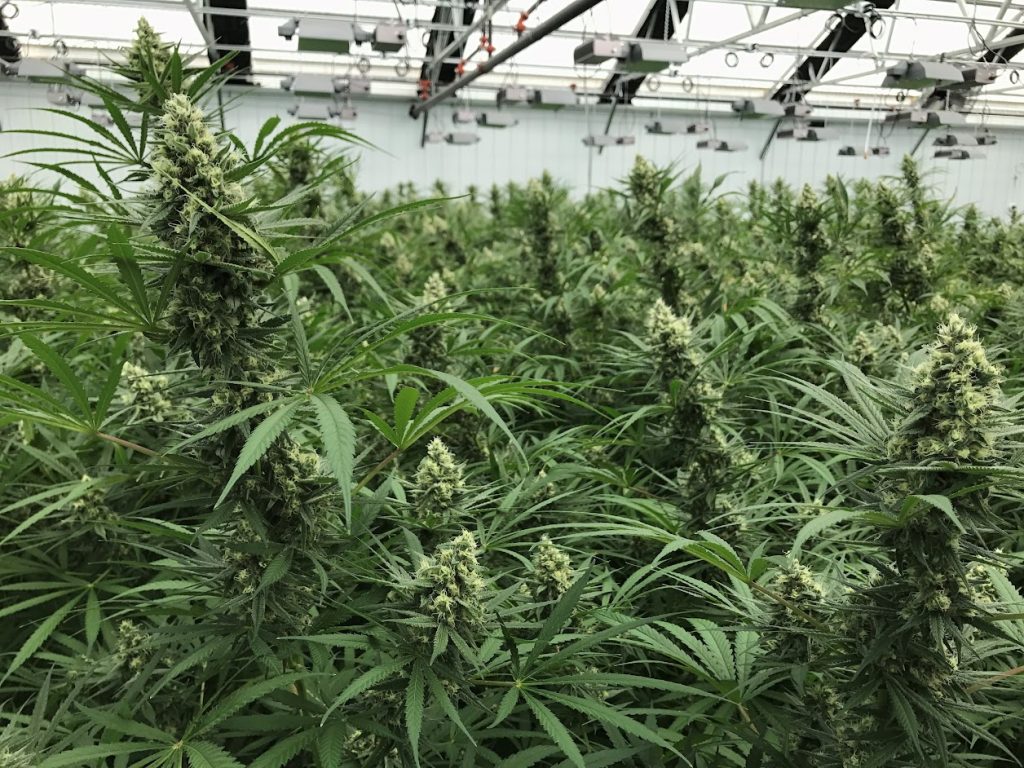It would be a simpler world if, to paraphrase the Grateful Dead, you could simply let your grow proceed by its own design. But with so many factors that influence how efficient and profitable your space can be, it’s not that easy to know where to start. We’re going to let you in on a little secret, though—vegetative growth is the ultimate deciding factor that will set the tone for your entire facility design plan. Here’s why.
When it comes to commercial cannabis, it’s all about time to profitability. That means your grow room design should act as an answer to one central question: how long do you want your plants to spend vegetating before harvest?
The length of your vegetative cycle influences how large each plant gets. And those two variables—time and size— affect nearly every other aspect of your grow, from the available space for flower rooms to the substrate you use. Ultimately, it’s these factors that determine how many generations of veg plants you’ll need on deck at any given time, and how large your vegetation space will need to be.
Cultivation Cadence and Grow Room Design Strategy
It’s easy to start your grow room design plans with the exciting part—focusing on flower space and yields. Before you start designing flower rooms, remember that your veg methodology and the number of weeks of veg you require before flowering will greatly impact how much space you’ll have available for bloom.
Cultivating big plants, for example, requires both a longer vegetative period before flowering and more horizontal bench space—say goodbye to that multi-tier grow system. Smaller plants can be grown vertically in less time, which is why many cultivators prefer a grow room design plan that allows for a greater number of compact plants. That’s especially true if you need to work around a wonky layout or need to save an extra room for tasks like popping seeds or maintaining a strain library.
It can be helpful for timeline planning to think of your crop’s vegetative phase in terms of generations. How many generations, or crops, does your vegetation room need to accommodate based on how often you need to fill a flower room and the age and maturity of each crop as it moves into flower?
If you require a full month of vegetative growth (or even longer), you may end up needing many more generations in the flower room at a given time to meet demand. Growers who put their plants in veg two weeks prior to flowering and who harvest and refill a flower room each week may only require two generations of plants on benches, and one or two generations in clone domes.
A methodology like this will require significantly less veg space than growers who veg for four to six weeks, and who need to meet the same harvest schedule. Those growers may require four or more generations of plants in the veg room at any given time—requiring a much larger facility design footprint.
In larger cultivation facilities, growers may be inclined to reduce veg time to one week for rooted clones and to simply “veg in place”—negating the need for a separate veg room altogether. Using this technique, growers who flower for 60 days simply move to a 67-day cycle in flower. The first week may be all the veg time those plants get, but this not only reduces the square footage dedicated to vegetative growth, it also means you can use more real estate for only the mothers and clones.
This approach also significantly reduces labor and materials costs by minimizing time spent pruning and maintaining and moving mature plants throughout the facility, as well as by minimizing the overall amount of fertilizer and light each plant requires throughout its lifetime. Flowering smaller and younger plants also reduces the risk for exposure to pests or microbes. Ask anyone who’s run a veg room which plants cause them the most trouble—they’re usually the oldest plants in the room, and particularly older mothers. Filling flower rooms with young and vibrant plants will give your garden the best chance to fend off unwanted pests and problems.
Vegetative Growth Times and Vertical Cultivation
To establish just how much room that short, ideal growing cycle requires—and how to arrange the rooms in any given cultivation space—you want to go back to those original questions about plant size and vegetation time. This will inform other decisions like equipment selection, which substrate you use and even what kind of fertigation delivery systems, facility finishes and cleaning and pest prevention inputs you’ll need to order on the regular.
For example, if you are looking at a facility design with an irregular layout, you may need a grow room design plan that can accommodate a multi-tier setup to fit in enough plants to make an eight week harvest cycle financially feasible. Vertical cultivation likely discounts using soil as a growing medium.
Growing smaller plants also allows growers to veg their plants on multi-level racks, freeing up even more square footage. This reduction in required veg space can result in big increases in available flower space. While flowering on multi-tier racks can be daunting, running the veg cycle on multi-tier racks is a strategy that can be applied in nearly any facility. A veg room with 12-foot ceilings can easily accommodate three tiers of vegging cannabis plants, depending on how big you’re going to let them get.
If you don’t have to worry about particulates leaching out of pots and clogging drains, that in turn makes sustainable equipment options like a wastewater reclamation system a more appealing possibility. The vertical growing racks also narrow down your cultivation lighting options—with plants spaced more closely together, LED lights will almost always be a better choice than traditional HID lights.
